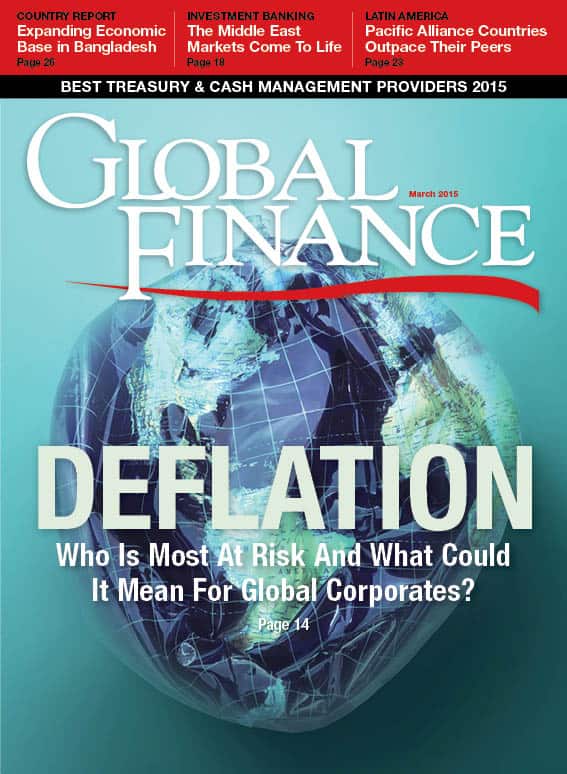Dear Reader
MARCH 2015 | VOL. 29 NO. 3

Deflation is one of the worst fears of central bankers and economists worldwide, but the risk it engenders isn’t always clearly defined. In recent months and weeks the intensity of the debate on the risk of deflation has increased. The specter of Japan’s lost generation hovers over Europe, where inflations rates, like government bond rates, have begun to go through the floor into negative territory. Indeed, inflation rates globally could come in well below this year’s projections of 1% to 2%.
But not all kinds of deflation are equal: Much depends on its causes and how long the trend lasts. Low inflation and decreasing oil and food prices increase the purchasing power of consumers and can boost economic growth. Increased productivity—which is also associated with reduced costs—provides its own economic boost. This combination of low inflation and rising productivity seems to be the formula driving economic growth in the US right now.
But when deflation persists, it ultimately brings lower demand for goods and services. Martin Weale, an independent member of the Monetary Policy Committee of the Bank of England, says: “If very low expectations of inflation were to become entrenched, there would be a risk that the economy would sink into a deflationary spiral. Wages and prices could fall, people might put off spending if they thought things would be cheaper in the future, and they would find that, even though interest rates were very low, their mortgages [had become] a burden which was difficult to manage.”
As the Bank of England’s governor, Mark Carney, stated recently, deflation is also a risk when there is economic growth—and this risk is now rising in the UK for the first time in over half a century.
That is why we often talk about “good” and “bad” deflation.
So what does all this mean for corporate executives and bankers? This month’s cover story tries to provide some answers—and to show as well what today’s variety of deflation might mean for you and your business.

Andrea Fiano | Editor
afiano@gfmag.com



